How Road Salt Impacts Our Health and Infrastructure (Webinar)
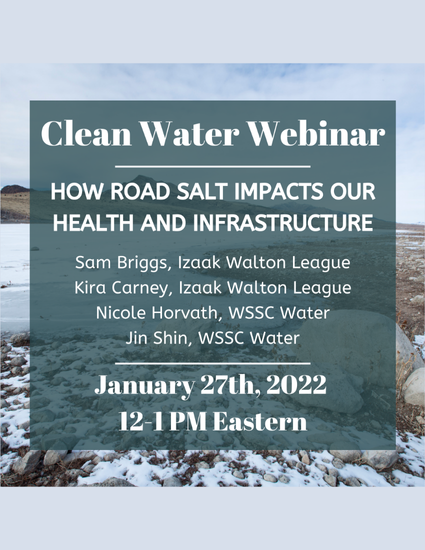
Join the Izaak Walton League and WSSC Water to learn how road salt impacts our environment, our health and our infrastructure. The League provides an overview of the Winter Salt…
Gaithersburg Winter Salt Watch Kickoff: Engaging Gaithersburg for Better Road Salt Practices (Webinar)
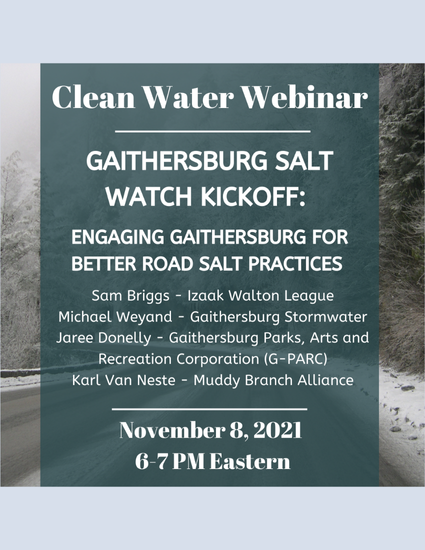
Learn more about Gaithersburg’s efforts to salt smarter, and see sneak peaks of the custom snow plow art that will hit the streets this winter.
SOS Chemical Data Form
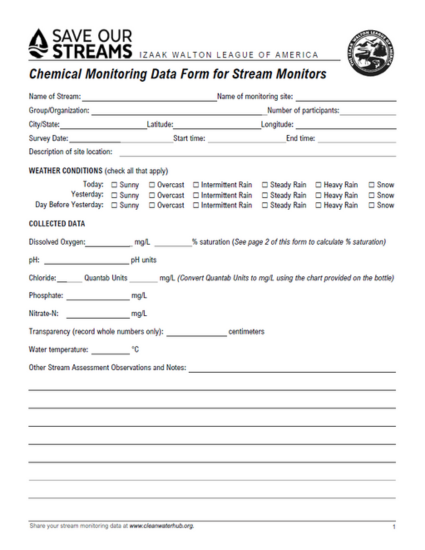
The datasheet to fill out while conducting Save Our Streams chemical monitoring.
Salt Watch Kickoff: Engaging Communities for Better Road Salt Practices (Webinar)
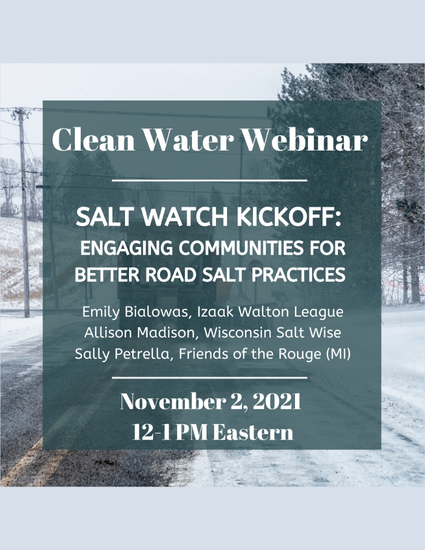
Join us to kick off this year’s Winter Salt Watch at our November Clean Water Webinar! We will provide background information and updates on the Salt Watch program and then…
Microscopic Organisms, Monumental Problems: Bacteria Pollution in Our Waters (Webinar)
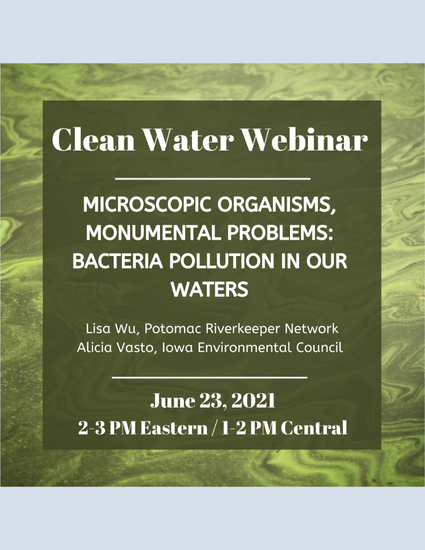
Microcystin, E. coli, manure, sewage… too frequently, these pollutants can be found in our streams, rivers and lakes. Though we can’t see bacteria with our naked eyes, we also can’t…
Beyond Monitoring: Protecting Your Waterways from Aquatic Invaders (Webinar)
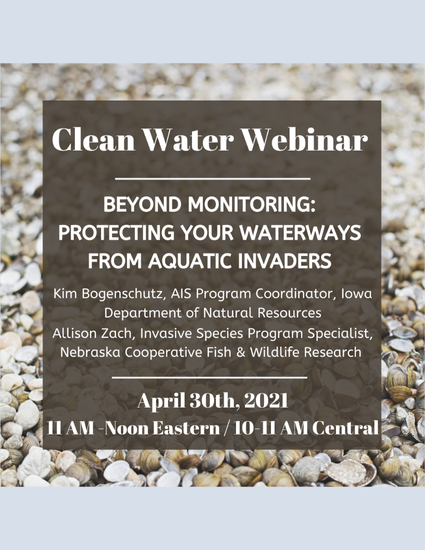
Aquatic Invasive Species (AIS) are non-native organisms whose introduction causes or is likely to cause economic or environmental harm, or harm to human, animal or plant health. These aquatic invaders…
Action and Advocacy to Protect Water Quality: What You Can Do (Webinar)
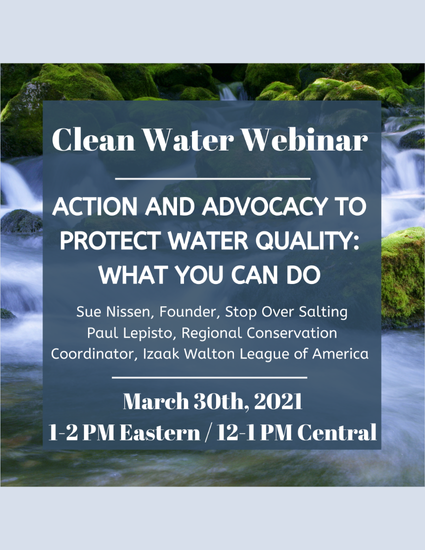
After finding troubling water quality data or learning about a water quality problem that you care about, what do you do next to effect positive change? We’ll hear from two…
SOS Chemical Monitoring Instructions
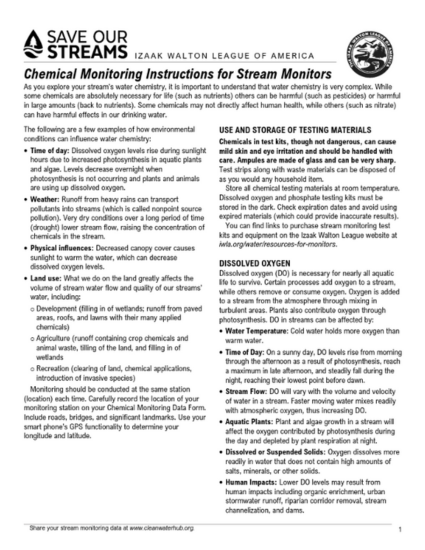
Detailed instructions on conducting Save Our Streams chemical monitoring.
The State of Nitrate Pollution (Webinar)
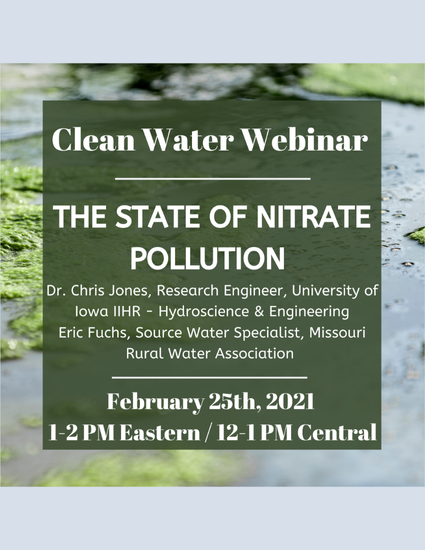
Nitrate is a chemical compound made of nitrogen, and it is a naturally occurring vital component of our ecosystems. However, humans have been contributing unhealthy levels of nitrogen to our…
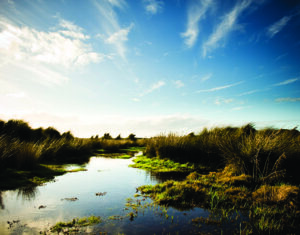
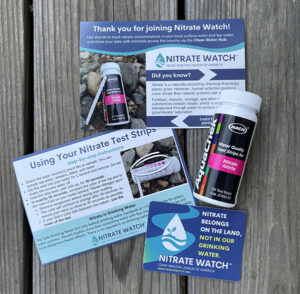 Your kit will include a bottle containing 25 nitrate test strips which you can use to test your water source(s) throughout the year. You’ll also receive postcards explaining how to use your nitrate test strips and how to share your Nitrate Watch results on the Clean Water Hub.
Your kit will include a bottle containing 25 nitrate test strips which you can use to test your water source(s) throughout the year. You’ll also receive postcards explaining how to use your nitrate test strips and how to share your Nitrate Watch results on the Clean Water Hub.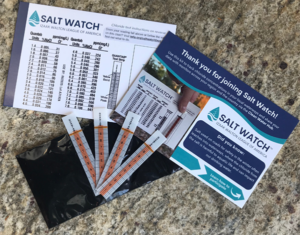 Your kit will include four test strips so you can test your waterway throughout the season. You’ll also receive a chart to help you interpret your results and a postcard with instructions for completing a Salt Watch test and reporting your findings.
Your kit will include four test strips so you can test your waterway throughout the season. You’ll also receive a chart to help you interpret your results and a postcard with instructions for completing a Salt Watch test and reporting your findings.